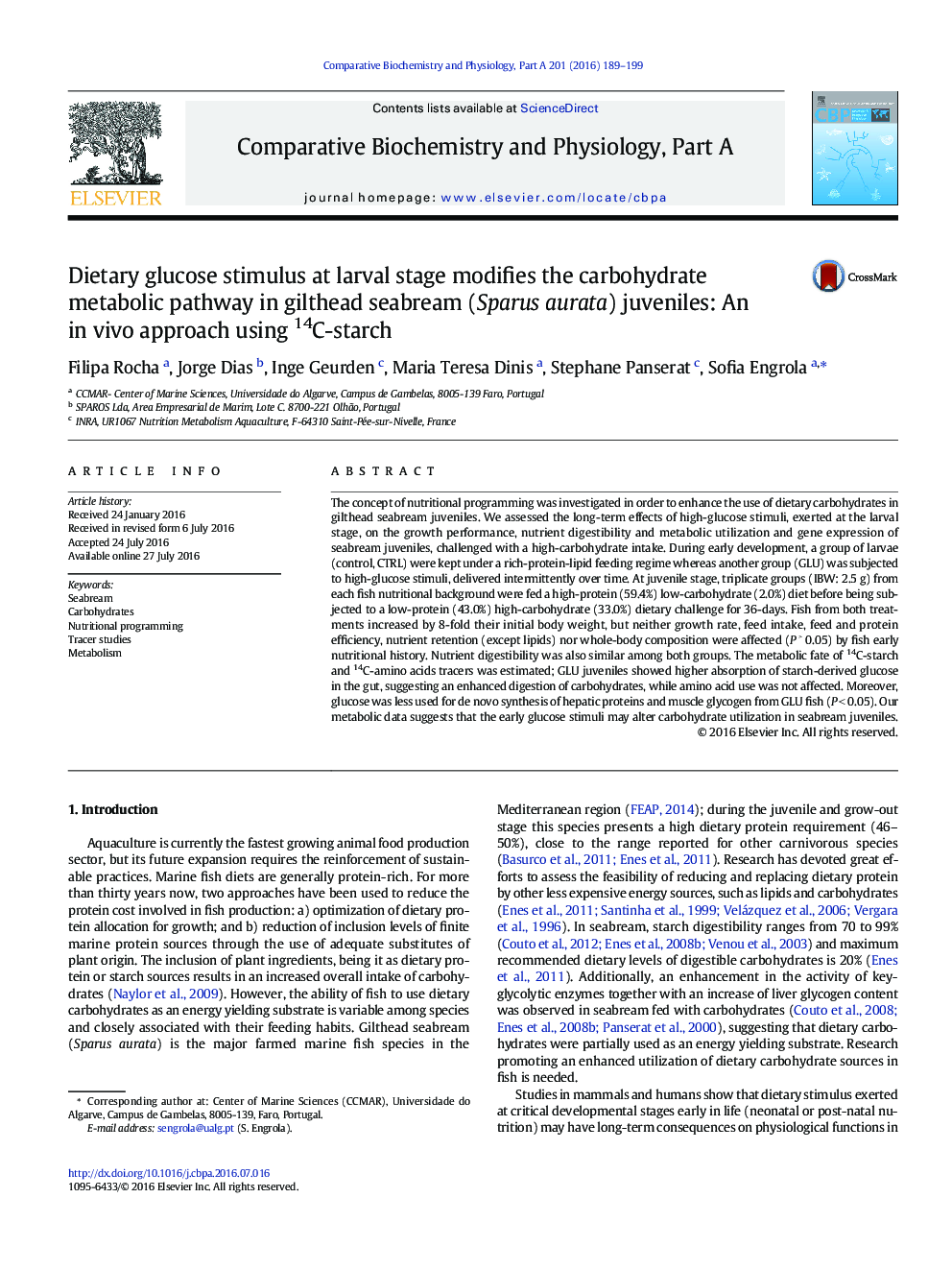| Article ID | Journal | Published Year | Pages | File Type |
|---|---|---|---|---|
| 1971839 | Comparative Biochemistry and Physiology Part A: Molecular & Integrative Physiology | 2016 | 11 Pages |
The concept of nutritional programming was investigated in order to enhance the use of dietary carbohydrates in gilthead seabream juveniles. We assessed the long-term effects of high-glucose stimuli, exerted at the larval stage, on the growth performance, nutrient digestibility and metabolic utilization and gene expression of seabream juveniles, challenged with a high-carbohydrate intake. During early development, a group of larvae (control, CTRL) were kept under a rich-protein-lipid feeding regime whereas another group (GLU) was subjected to high-glucose stimuli, delivered intermittently over time. At juvenile stage, triplicate groups (IBW: 2.5 g) from each fish nutritional background were fed a high-protein (59.4%) low-carbohydrate (2.0%) diet before being subjected to a low-protein (43.0%) high-carbohydrate (33.0%) dietary challenge for 36-days. Fish from both treatments increased by 8-fold their initial body weight, but neither growth rate, feed intake, feed and protein efficiency, nutrient retention (except lipids) nor whole-body composition were affected (P ˃ 0.05) by fish early nutritional history. Nutrient digestibility was also similar among both groups. The metabolic fate of 14C-starch and 14C-amino acids tracers was estimated; GLU juveniles showed higher absorption of starch-derived glucose in the gut, suggesting an enhanced digestion of carbohydrates, while amino acid use was not affected. Moreover, glucose was less used for de novo synthesis of hepatic proteins and muscle glycogen from GLU fish (P < 0.05). Our metabolic data suggests that the early glucose stimuli may alter carbohydrate utilization in seabream juveniles.
